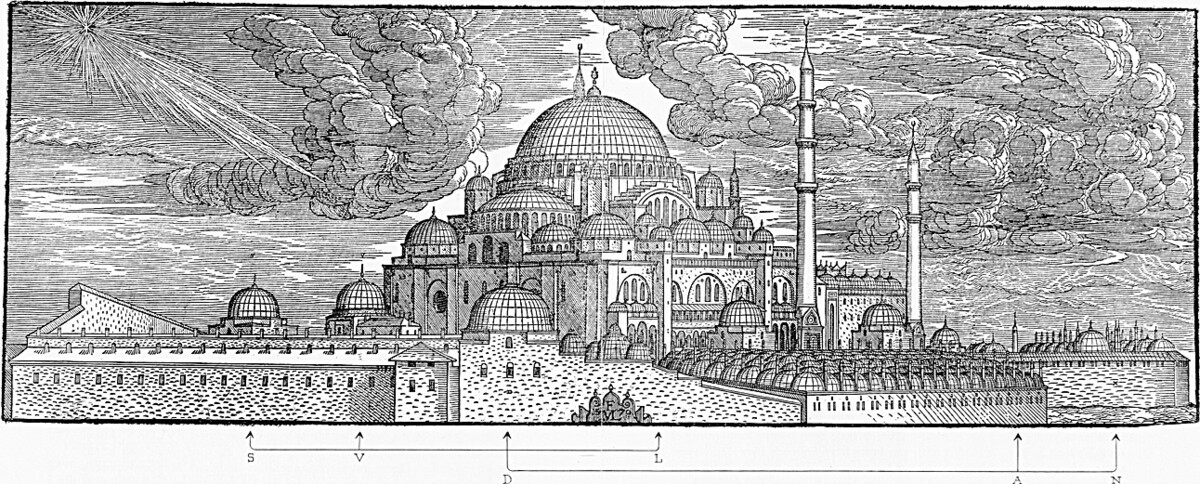Source

Source: Melchior Lorck, The Süleymaniye
Mosque, woodcut, 1570. Royal Danish
Library,
http://img.kb.dk/tidsskriftdk/gif/ffo/ffo_1964_11-IMG/ffo_1964_11_0068_1.jpg
Melchoir Lorck’s woodcut of the Süleymaniye mosque in Constantinople (Istanbul) attests to sixteenth-century Europeans’ interest in Ottoman civilization. Lorck, a well-educated and cosmopolitan artist, served as a member of the Imperial embassy at the court of Sultan Süleyman I. (r. 1520-66) from 1555-59. During this time, he composed numerous studies of the architecture and the people of the Ottoman Empire. Later on, he used these studies as basis for drawings and prints. The Süleymaniye mosque dates from 1550 to 1557; it was built by Sinan, the most famous Ottoman architect.

Source: Melchior Lorck, The Süleymaniye
Mosque, woodcut, 1570. Royal Danish
Library,
http://img.kb.dk/tidsskriftdk/gif/ffo/ffo_1964_11-IMG/ffo_1964_11_0068_1.jpg
Royal Danish Library